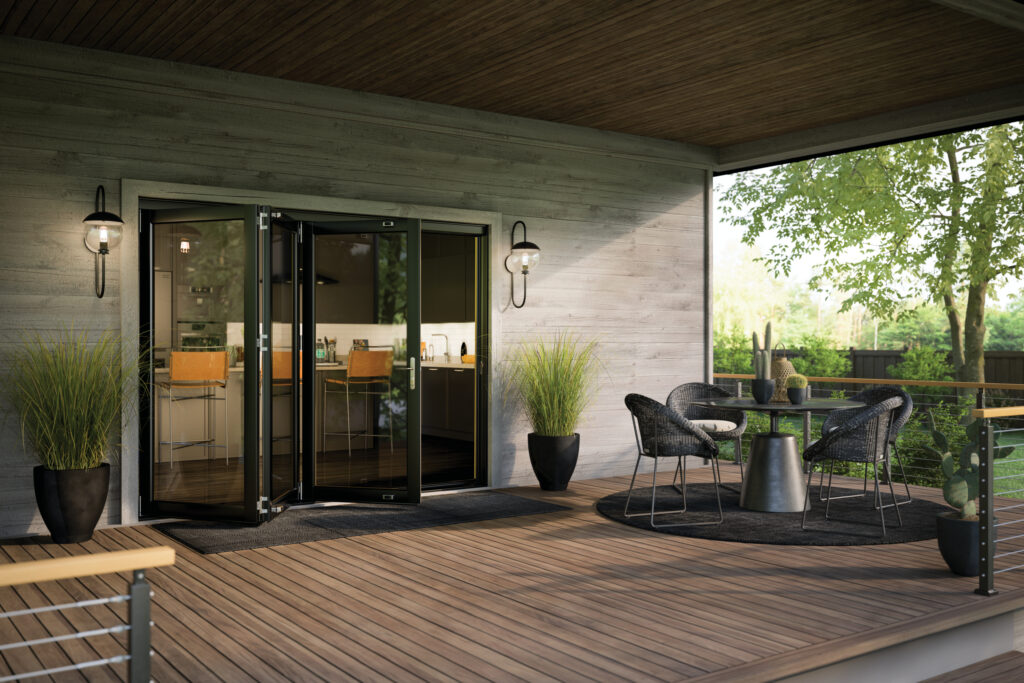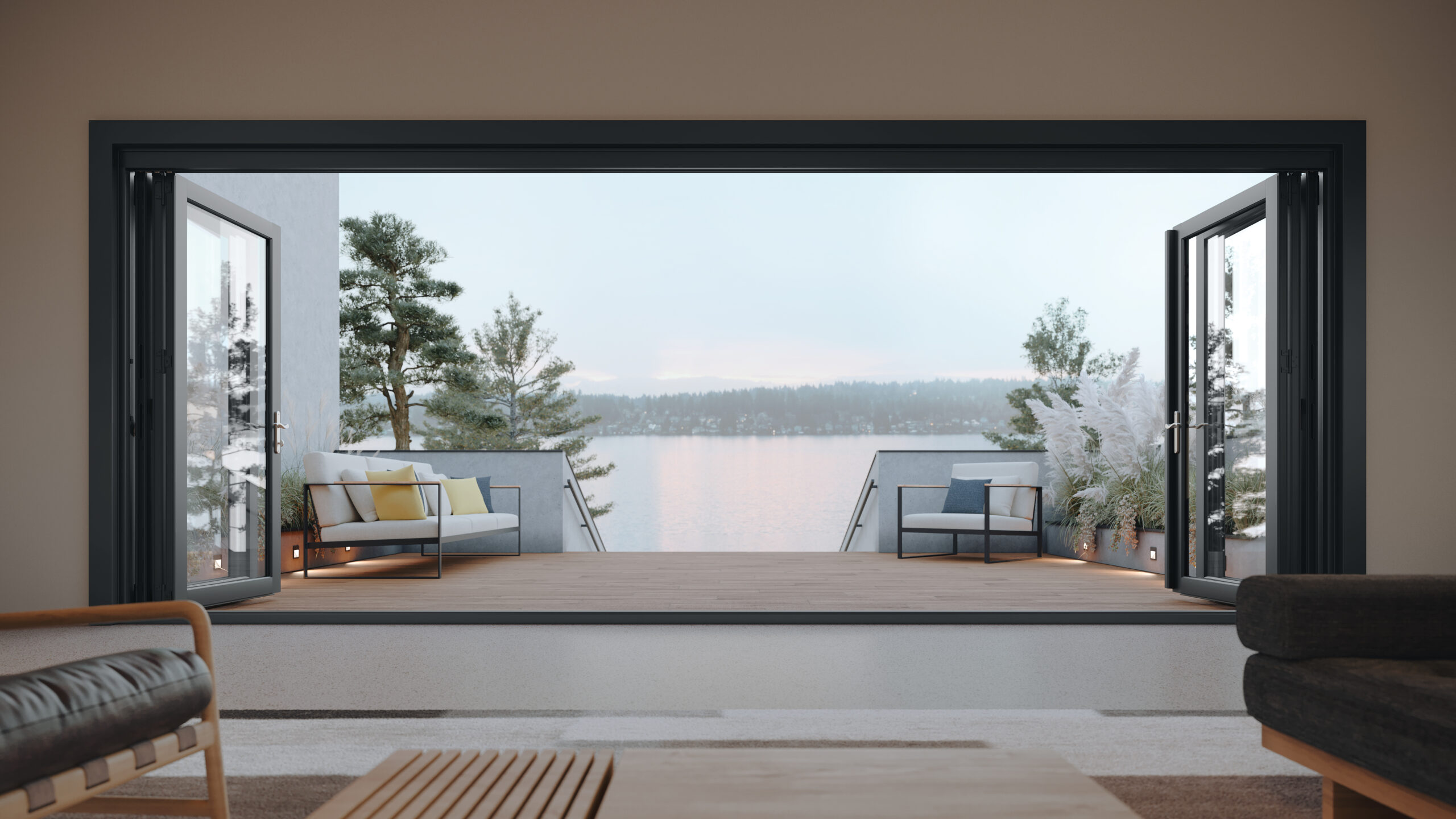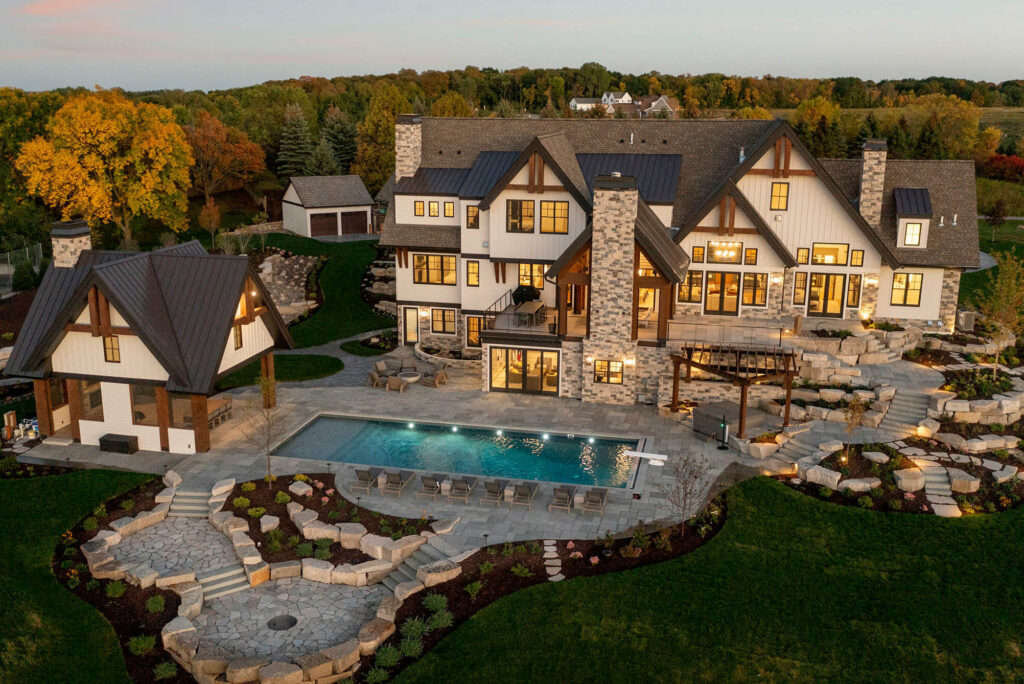Artisan homes are known for luxurious amenities, state-of-the-art technology, and one-of-a-kind craftsmanship, but when it comes to building in the high-end, custom market, the outdoor living spaces should be given as much attention as the interior.
“While selecting the finishes and elements inside your home to accentuate its true beauty and your unique style, let that personalization flow into your outdoor living space,” says Jeff Johnson, owner of Phantom Screens. “You want to choose elements that can meet your needs today but also be used long into the future as you grow into the space.”
Here, Johnson and other local building professionals offer five tips for creating an outdoor living space worthy of an Artisan home.
1. Create a seamless indoor-to-outdoor transition
There’s a resort-like aesthetic in homes that encourage easy access to outdoor living spaces. Luckily, you don’t have to hop on a plane to tap into year-round vacation vibes. “Homeowners are increasingly seeking strong indoor-outdoor connections, which has led to a significant rise in spaces that promote a seamless flow between interior and exterior,” says Christine Marvin, chief marketing and experience officer at Marvin.
Windows and doors facilitate that connection, so it’s crucial to choose designs that allow for clear sightlines of and accessibility to nature. Marvin’s new Elevate Bi-Fold door, for example, utilizes a glide-and-stack opening mechanism to create a large opening to your backyard. All you need now is a Mai Tai.

2. Maximize the use of your outdoor spaces
Living in Minnesota, mosquitoes and cold weather are unavoidable, but they shouldn’t inhibit your ability to enjoy your outdoor living spaces — and neither should a screen that blocks a million-dollar view.
Enter Phantom Screens: motorized, retractable screens that can be controlled with the push of a button. “When planning your outdoor living space, flexibility and usability should be at the forefront of your decision-making process,” says Johnson. “Phantom Screens offer the opportunity to have a multi-use space for all seasons and weather conditions while staying true to the stunning architecture. The ability to hide system components in the framework of your home gives you the flexibility to have a wide-open porch space during the day, a fully screened and bug-free area at night, and protection from the rain and snow year-round.”
3. Design with curb appeal in mind
Most people who pass by your home won’t have the opportunity to see inside, so you want to make a strong first impression with the exterior. “The first thing that a homeowner or guest sees is the exterior. That sets the expectations of what is inside the home,” says Stu Hudson, president and owner of Anchor Roofing & Exteriors. “The fine details, quality of the materials, and workmanship make the home shine on the outside, and will reflect how the home looks on the inside.”
Implement different materials — like a combination of siding and stone — to make your home stand out from others, but be mindful of how many colors you’re incorporating. “Try to stick with no more than three,” cautions Hudson, noting that white, black, gray, and deep blue are trending in exterior design, while browns and earth tones are on their way out.
4. Add “wow” factors
Nothing screams luxury like those unique, unexpected features that infuse your outdoor living spaces with personality and make your guests say “wow.” Perhaps it’s a pool with a waterfall and custom LED lighting for night swims, or a gas fire table ideal for summertime s’mores roasting. Homeowners who love to cook and entertain often opt for an outdoor kitchen and pizza oven covered by a pavilion.
“Pavilions have been a popular feature for luxury homes,” says Pat Henry, owner of Prestige Pools. “A lot of homeowners will use them deep into the fall. If it’s drizzling out or even snowing, you can still be outside under that structure with a sweatshirt on and enjoy it.”
5. Think about the big picture
When it comes to designing an outdoor living environment worthy of an Artisan home, you should think about how all the elements will tie together to create a space that is both functional and aesthetically pleasing.
When installing a pool, for example, you also must plan for the high-end decking or patio surface material that will make the area pop — Henry suggests pavers or stones, as opposed to concrete — and the surrounding landscape features that separate an ordinary pool from a luxury one.
“If it looks pretty but there is no utility to it, you’re not going to be happy. Or, conversely, if there’s tons of utility but it goes flat and you hate looking out the back of your house every day, that doesn’t help either,” says Henry. “It needs to be a blended marriage. Ask yourself: Does it work well for us? Does it have a ‘wow’ factor?”
Written by Taylor Hugo







